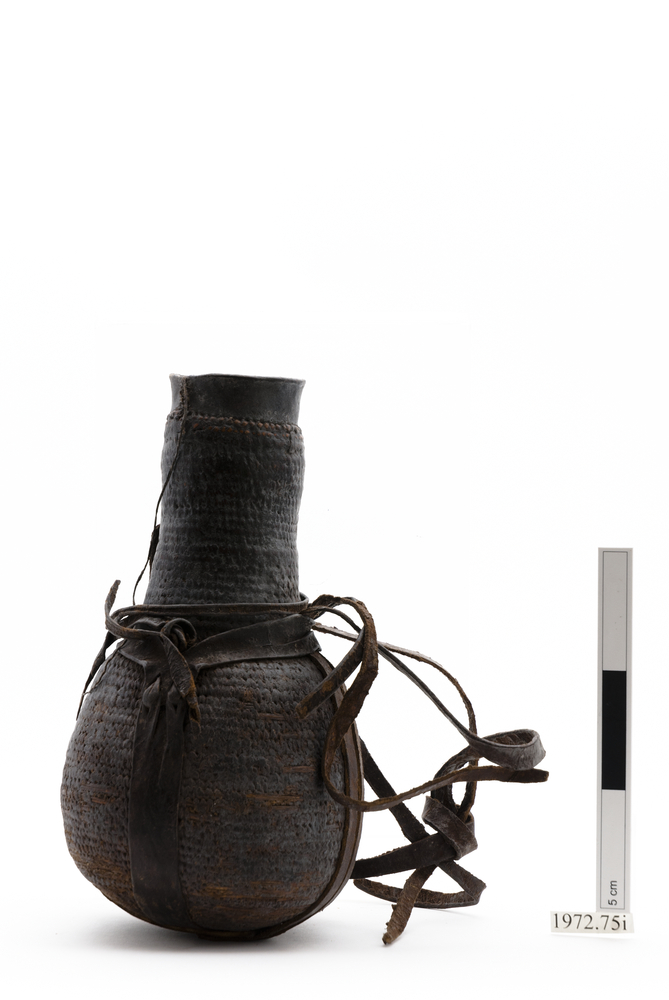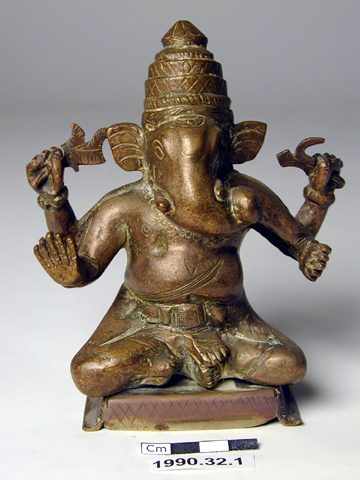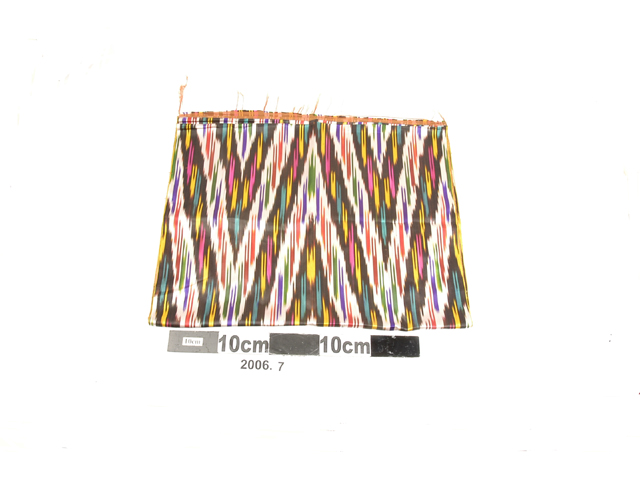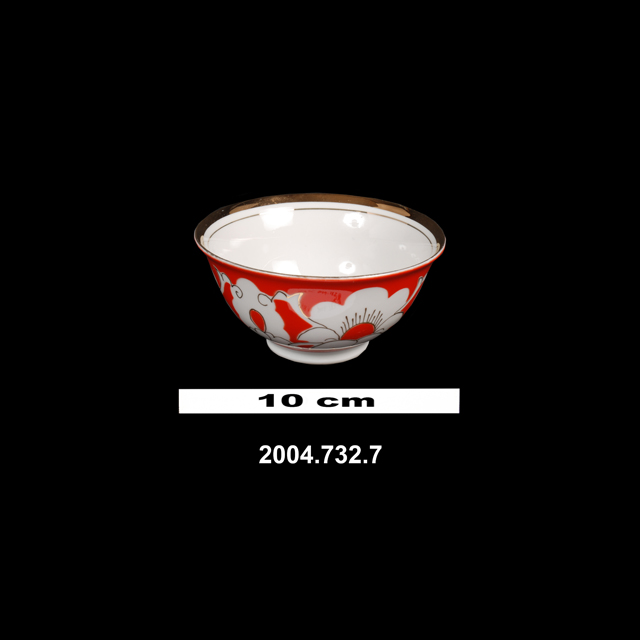So called ‘Kava ladle’ constructed from a single piece of tamanu wood into form of a traditional Austral islands bowl of boat shape which is carved in one piece with a square sectioned handle of the same style as the ornamental paddles from the Austral islands. This handle flares into a concave cone and terminates in a circular pommel with eight circumferential bosses. These bosses are shaped like highly abstracted human heads with widely spaced eyes. A similar face is carved at the stern of the bowl. The kave ladle is engraved throughout with boxed X’s and some panels of parallel zig zags. The shaft has been cracked during manufacture and has been bound with fine coconut fibre cordage in two places to prevent this become a fatal break.
Ornamental Kava Ladle, Ra‘ivavae island, Austral Islands, Central Polynesia Like the more numerous and widely-known ornamental paddles of the Austral Islands, the prodigious woodcarvers of Ra‘ivavae island carved elaborately engraved ladles from a single piece of hardwood. Much like the paddles, these objects are unlikely to predate the period of systematic Western visits to the islands, and they are likely to be an early type of souvenir. There are no traditional ladle forms in the repertoire of Central Polynesian carvings prior to Western contact, and it is quite possible that the Ra‘ivavaean carvers were inspired by their early experiences of Western cutlery. These objects are generally called ‘kava ladles’, but there is little credible evidence of their local use in the Austral Islands to mix or serve this mild narcotic beverage; throughout Polynesia, a coconut shell cup sufficed for this purpose. If we look for sources for the form of the ladles in other Australs carvings, we can quickly see that the ladle bowl closely follows the distinctive shape of food bowls carved on the same island, while the handle is exactly the same as the island’s ornamental paddles. Wood. Probably Early-Mid 19th Century. Formerly in the collection of the Canterbury Museum, Kent and passed to the Horniman Museum with other ethnographic specimens in 1961.






